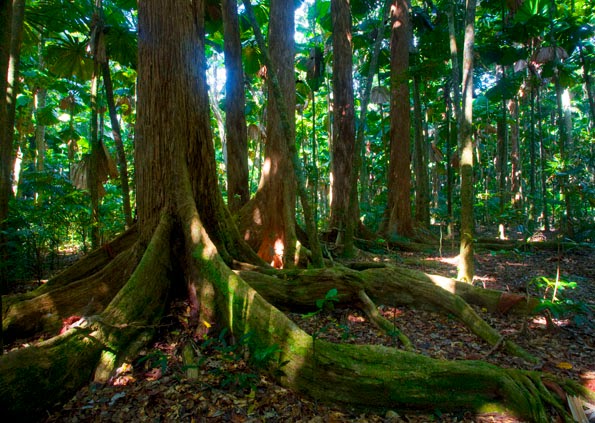Most significant Rain Forests in the world
Rainforests
are the forests who get the high rainfall throughout the year between
1750-2000 mm. The monsoon trough plays an important role in creating
these rain forests. Rainforests have a large amount of unique plants,
animals, insects and microorganisms and some are still undiscovered.
These rainforests are the jewels of the Earth, because natural medicines
are there and 28% of oxygen
turnover is because of them. Normally rainforests have two types that
are tropical and temperate rainforest.
There are a large number of rainforests in the world, and they affect our global climate very much due to the fact that they absorb a vast quantity of carbon dioxide, they are a source of timber and animal products for us, they are also tourist attractions. So people here we have this list about the top 10 rainforests of the world and if you ever get a chance to visit them, you really should do that!
There are a large number of rainforests in the world, and they affect our global climate very much due to the fact that they absorb a vast quantity of carbon dioxide, they are a source of timber and animal products for us, they are also tourist attractions. So people here we have this list about the top 10 rainforests of the world and if you ever get a chance to visit them, you really should do that!
1. Daintree, Australia
2. Ecuador’s Cloud forests
3. The Amazon Rainforests
This one is called the home to the largest rainforest of the earth. This covers the 40% of the South American continent that includes countries like Brazil, Bolivia, Peru, Ecuador, Colombia, Venezuela, Guyana and Suriname. This is made of different types of ecosystems and vegetation types like rainforests, seasonal forests, deciduous forests, flooded forests and savannas.
4. Alaska’s rainforests
These are the temperate type rainforests and have the unique species of plants and animals here like the tall stands of spruce, hemlock and cedar trees and mosses, wild flowers and berries of different types are found here. This one is really perfect for the nature lovers.
5. Sapo National Park, Liberia
This is also a virgin rainforest and a humid one, they have the unique species of vegetation like choleras and flesh-eating micro-organisms. But this one is really a human threat forest like while visiting this place, inform the authorities before going there.
6. The Mount Kinabalu National Park, Malaysia

This park is the botanical paradise of flora and fauna and has variety or species of plants like 4,500 and 289 species of birds and 290 types of butterflies including the Kinabalu Giant red Leech and Giant Earthworms.
7. The Monteverade Forest, Costa Rica
This one has a canopy-level cloud cover and a continuous supply of moisture which raises the plant production here. This forest is abundant with vegetation and unique animals including reptiles, mammals and birds like three-wattled bellbird, bare-necked umbrellabird, keel-billed toucan, long tailed manakin and howler monkeys.
8. Montecristo cloud Forest, El Salvador
This is a very thick and protective forest and has many rare species of animals and plants like ferns, oaks, laurels, orchids, owls, spider monkeys, anteaters, pumas and toucans.
9. Sinharaja Forest, Srilanka
10. Emas National Park and Chapada Dos Veadeiros, Brazil
These are located in the Center-West Region of Brazil and have a cerrado ecosystem and have a large amount of unique wildlife in it. Animals like the giant anteater, giant armadillo, maned wolf, and jaguar and pampas deer are present there. These are known for their rich vegetation and wildlife.









 The white blood cells fight infection.
The white blood cells fight infection.






